Table Of Contents
Introduction
Growth in higher education today is being driven by modern technology and reliable infrastructure. With 74% of institutions currently leveraging AI to enhance teaching, research, and administrative efficiency, the ability to manage these workloads across on-premises data centers as well as public, private, and hybrid cloud environments has become critical. By using these tools wisely, colleges and universities can improve efficiency, support students better, and create new opportunities for long-term institutional growth.
Essential Factors for Sustainable Institutional Growth
For an educational institution to succeed in today’s changing environment, it needs to focus on quality, efficiency, inclusivity, and innovation. These institutional growth factors help ensure long-term development, improve stakeholder satisfaction, and maintain smooth and effective operations.
Prioritizing Quality
Placing quality at the center ensures that every aspect of an institution—teaching, research, administration, support services, and ERP solutions—meets the highest standards. This requires a culture of continuous improvement, relying on feedback, evaluations, and data-driven decision-making.
Operational Efficiency
Efficient operations are crucial for growth. By simplifying processes, using technology, and encouraging innovation, colleges can better serve students and stakeholders. For example, a comprehensive campus management system can greatly improve efficiency. In fact, a 2024 EDUCAUSE report shows that 70% of colleges now use analytics to boost their operational efficiency.
Ensuring Universal Access
Institutions must provide equal educational opportunities for all students, regardless of background or circumstances. Creating an inclusive learning environment, offering scholarships and financial aid, and leveraging ERP solutions to enhance accessibility are key strategies to promote universal access.
Effective Onboarding
The onboarding experience shapes students’ long-term success. Dedicated advisors, orientation programs, boot camps, and pre-enrollment bridging courses help students understand campus resources, build confidence, and prepare for their first-year courses.
Early Career Guidance
Providing students with early career support helps them align their education with future opportunities. This includes sharing labor market insights, connecting students with alumni, offering pre-professional coaching, and organizing skill-building seminars. However, a 2024 report by Inside Higher Ed found that only 1 in 5 students at public universities receive high-quality education-to-career coaching, with significant differences across disciplines.
Scalable Growth
Institutions can achieve scalable growth by expanding programs, infrastructure, faculty, and technology to reach more students and enhance operations. The higher education market is growing rapidly, valued at USD 256.56 million in 2024 and projected to reach USD 493.85 million by 2032, with a CAGR of 8.53% from 2026 to 2032. This growth highlights significant opportunities for institutions to scale effectively and strengthen their impact.
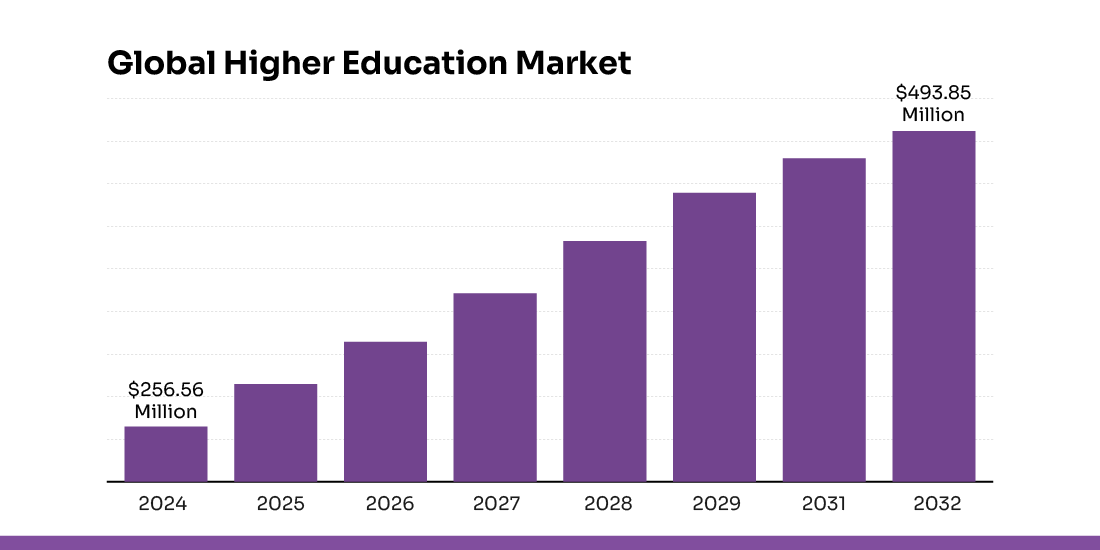
Multicampus Management
Operating multiple campuses extends an institution’s geographical reach. Efficient coordination, communication, and management are crucial. Integrated ERP solutions enable smooth administration of multicampus operations with minimal effort.
Enhanced Stakeholder Experience
A positive experience for students, faculty, staff, and parents is essential. Providing quality education, robust support services, a safe and inclusive environment, and fostering respect, diversity, and inclusion strengthens stakeholder satisfaction.
Optimal Resource Utilization
Maximizing the use of financial, human, and physical resources ensures sustainable growth. Institutions must strategically allocate resources based on priorities and needs to achieve the greatest impact.
Cost Efficiency
Keeping costs under control is important for sustainable growth. Colleges can reduce waste, use energy and resources wisely, and make smart contracts to stay within budget while growing. In the UK, 40% of universities are expected to face budget deficits, showing how crucial cost-saving and careful financial planning have become.
Key Strategies for Successful Institutional Growth
Growing an educational institution successfully requires a mix of operational efficiency, strategic partnerships, student-focused initiatives, and modern technology adoption. Below are key strategies institutions can implement to achieve sustainable growth.
Optimize Operations Through Shared Consortia
Outsourcing non-core administrative tasks helps institutions focus on relationships with sponsors, alumni, donors, and faculty while saving costs.
Implementation: Form consortia to jointly manage administrative services. A steering committee can guide the system, while managed service providers handle back-office operations such as finance and compliance.
Example: The Green Mountain Higher Education Consortium enabled its members to save money through joint purchasing contracts.
Build Strength with Public–Private Partnerships and Mergers
Collaborations with for-profit entities or mergers between institutions can free up capital, speed up project delivery, and strengthen long-term sustainability.
Implementation: Clearly define collaboration criteria, prepare binding financial agreements, involve lawmakers for approvals, and consider demographic and enrollment trends before execution.
Example: Purdue University’s acquisition of Kaplan University brought 32,000 students into its ecosystem and allowed a major leap into online education. The University System of Georgia also successfully merged 14 institutions into seven, guided by “Principles for Consolidation.”
Tailor Fundraising to Different Generations
Donor demographics are shifting—baby boomers, millennials, and Gen Z all respond differently to fundraising appeals. Institutions must align outreach with generational preferences.
Implementation:
- Baby boomers: Involve them directly in fund allocation.
- Millennials: Use transparent crowdfunding campaigns (70% more likely to donate this way).
- Gen Z: Harness social media, gamification, and competitive fundraising challenges.
Example: Purdue University’s one-day fundraising campaign, driven by social media and student competitions, successfully boosted donations.
Ensure Cloud Success with Independent Verification and Validation (IV&V)
As institutions shift to cloud-based IT systems, independent third-party reviews ensure quality, security, and efficiency in system development.
Implementation: Apply IV&V best practices—keep the process independent, focus on overall project health, and provide actionable improvement recommendations. Contracts with providers should outline clear data-handling standards.
Example: A 2024 survey by EdTech Magazine found that 88% of higher education institutions have moved over 25% of their applications to the cloud. Institutions that use independent validation partners report higher success rates in cloud transitions due to objective oversight and reduced implementation risks.
Protect Your Institution’s Reputation on Social Media
Social media can strengthen an institution’s reputation or harm it during a crisis if not managed properly. Active monitoring and honest, timely responses are essential. In 2025, people worldwide spent an average of 141 minutes per day on social media.
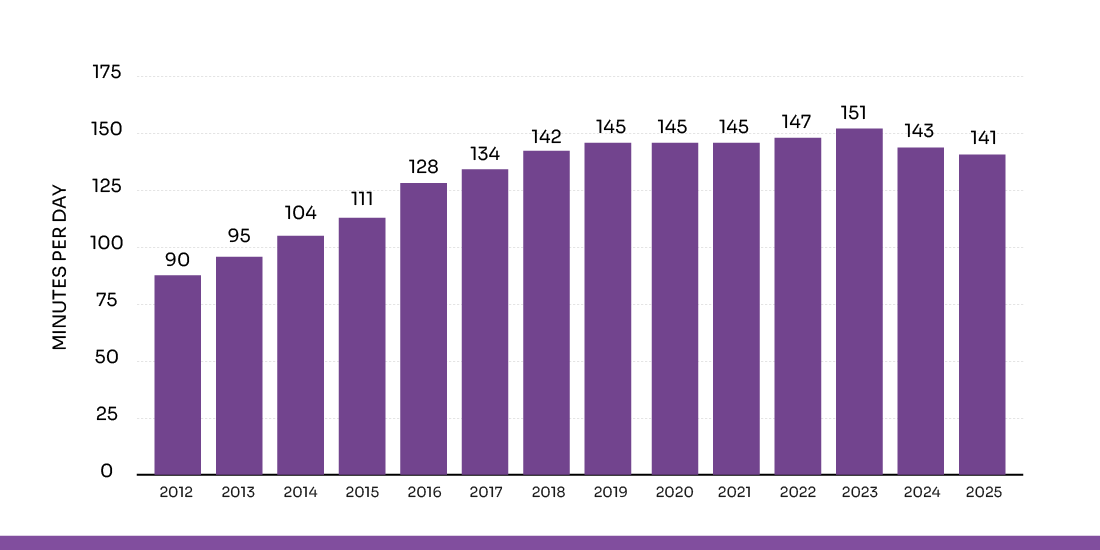
Implementation: Develop social media policies, monitor high-profile stakeholders’ accounts, create escalation plans for crises, and train administrators to communicate with authenticity.
Example: Gregory Fenves, President of the University of Texas at Austin, managed crises with an open, emotional, and transparent tone—earning public trust and credibility.
Growth with Responsive Ads
Responsive ads boost engagement by adapting automatically across devices and platforms, doubling conversion rates compared to static ads.
Implementation: Provide multiple ad formats, headlines, and visuals to platforms like Google Display Network and Meta’s Dynamic Ads. Let AI optimize delivery for each viewer.
Example: Institutions using responsive ads reported up to 2x more lead conversions compared to static ad campaigns.
Expand Reach via Consultancy Partnerships
Onshore and offshore education consultancies extend institutional visibility to untapped markets, offering trusted career guidance to students.
Implementation: Form agreements with consultancies in target regions. Provide them with program details, admissions support, and faculty interaction opportunities to showcase credibility.
Example: Institutions working with consultancies in Southeast Asia and Africa have seen growth in international enrollments. For example, the University of the Incarnate Word used a $1.4 million federal grant to support disadvantaged students, achieving a 96% retention rate and a 15% higher on-time graduation rate.
Develop Online Programs as New Revenue Streams
Online courses appeal to millennials and working professionals while generating consistent revenues without heavy infrastructure costs.
Implementation: Record lectures, package them into LMS-based modules, and offer live interactive sessions. Restrict access to enrolled learners while continuously updating content based on learner feedback.
Example: Universities using LMS-driven online programs have seen strong enrollments and expanded global reach. Sacred Heart University and Fairfield University have improved their online program rankings, with Fairfield’s online graduate business program moving into the top 30 percent.
Retain Students Through Holistic Support Services
Students who feel supported are 69% more likely to stay and pursue additional courses, boosting institutional revenue and reputation.
Implementation: Offer hybrid learning, financial aid, peer mentorship, wellness checks, digital service centers, and career mentorship programs. Personalize engagement through tailored communication.
Example: Texas Tech University achieved record graduation rates, with a four-year rate of 51% and a six-year rate of 69%, thanks to investments in student support programs like the Raider Success Hub.
Engage Students with Short-Form Video Content
Bite-sized video storytelling (90 seconds or less) improves outreach by showcasing facilities, culture, and opportunities, especially to remote students.
Implementation: Share virtual campus tours, student Q&A snippets, and program highlights on social media and the institutional website. Link short videos to longer content for deeper exploration.
Example: Universities that launched TikTok-style student life videos reported higher engagement rates from prospective applicants.
Strengthen Career Prospects with Internships
Strategic industry partnerships offering internships help institutions attract students by bridging academics and employability.
Implementation: Partner with top companies to design internships across all offered courses, ensuring practical learning opportunities.
Example: Colleges with strong internship programs see higher placement rates and increased admission demand. In 2024, graduates from 91 U.S. business schools had an average employment rate of 87.57%, showing how internships support career success.
Showcase Success Stories to Inspire Prospective Students
Nutshell: Real-life alumni success stories build trust in program value and career outcomes, attracting new enrollments.
Implementation: Feature student success journeys and employer partnerships across websites, social platforms, and brochures.
Example: Lamar State College Orange experienced a 20% increase in enrollment by highlighting its strong alumni network and successful career placements.
Use Influencer Marketing
Social media influencers and alumni ambassadors can extend institutional credibility and spark interest among prospective students.
Implementation: Identify educational influencers or popular alumni with strong followings. Engage them to promote institutional strengths authentically.
Example: Universities leveraging alumni influencers on Instagram and LinkedIn experienced noticeable boosts in international applicant numbers.
How Do I Know Which College Growth Strategies Will Work?
Choosing the right growth strategies for your institution can feel overwhelming, but the key lies in focusing on data, alignment, and student needs. Not every strategy will work for every institution. Here are some simple ways to know what will work best for you:
Understand Your Institution’s Goals
Before choosing any growth strategy, it’s important to know what your college aims to achieve—such as higher enrollment, better student retention, improved reputation, or increased revenue. Strategies that align with your institution’s vision and mission are more likely to succeed. In fact, colleges that match their marketing strategies with clear goals see a 12% higher return on investment (ROI) than those without defined objectives.
Analyze Student Needs and Preferences
Students are central to an institution’s success. Use surveys, focus groups, and feedback sessions to understand what students and prospective students value most, such as flexible learning options, career support, or affordable programs.
Study Market Trends
Stay updated on global and regional education trends to make informed growth decisions. For example, demand for online courses has increased by over 90% since the pandemic, showing that online learning is a major driver of growth. Monitoring such trends helps institutions adopt strategies that are future-ready. The online education market is expected to grow at a compound annual growth rate (CAGR) of 9.1% from 2018 to 2026, reflecting the rising need for digital learning programs.
Use Data and Analytics
Using data and analytics helps institutions make smarter decisions, identify students who may need extra support, and implement targeted interventions. For example, Western Governors University increased its graduation rates by five percentage points by leveraging predictive models to identify and assist at-risk students. Tools like EDMO Conversation Intelligence can further enhance this process by analyzing student interactions, identifying engagement gaps, and providing actionable insights to improve student success and retention.
Measure ROI Regularly
Every growth strategy should deliver measurable results—not only in financial terms but also in student success, engagement, and satisfaction. Continuously track key outcomes and use the insights to refine or adjust strategies that are not meeting expectations, ensuring resources are invested effectively for maximum impact.
Conclusion
Institutional growth in higher education depends on a strategic combination of technology adoption, operational efficiency, scalable programs, cost management, and data-driven decision-making. By understanding their goals, studying market trends, leveraging analytics, and continuously measuring outcomes, colleges and universities can enhance student success, improve stakeholder satisfaction, and expand their impact.
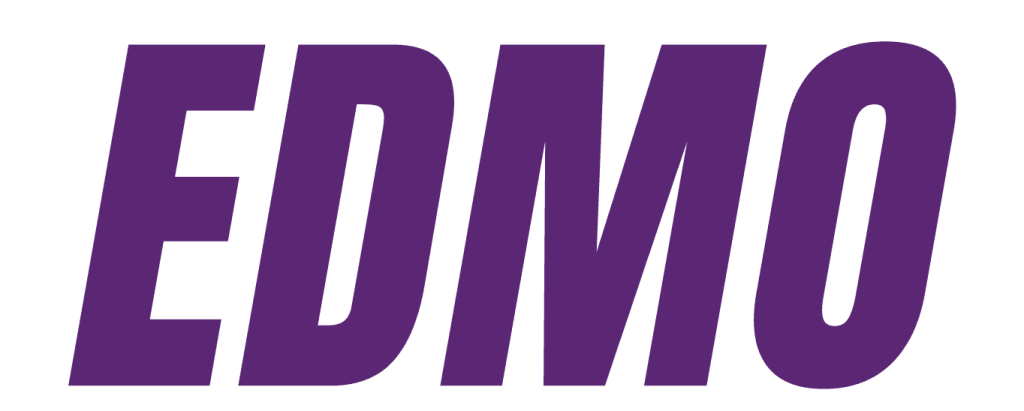
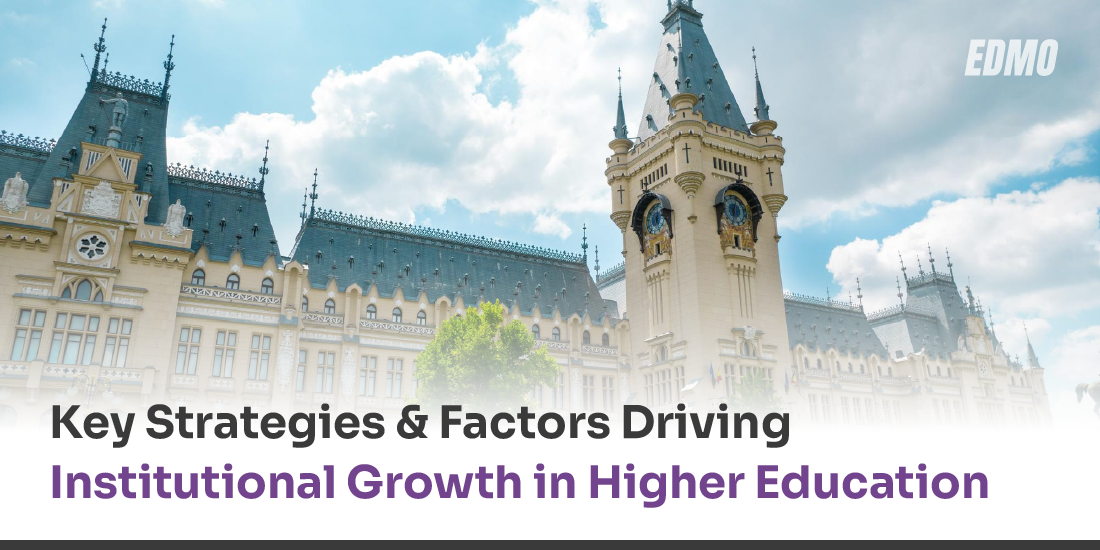
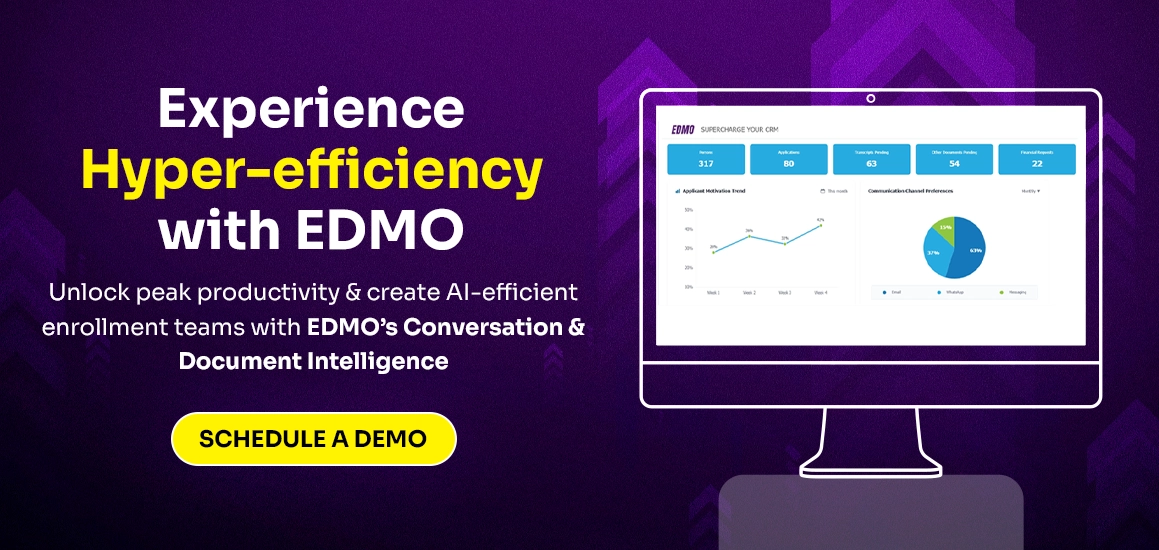






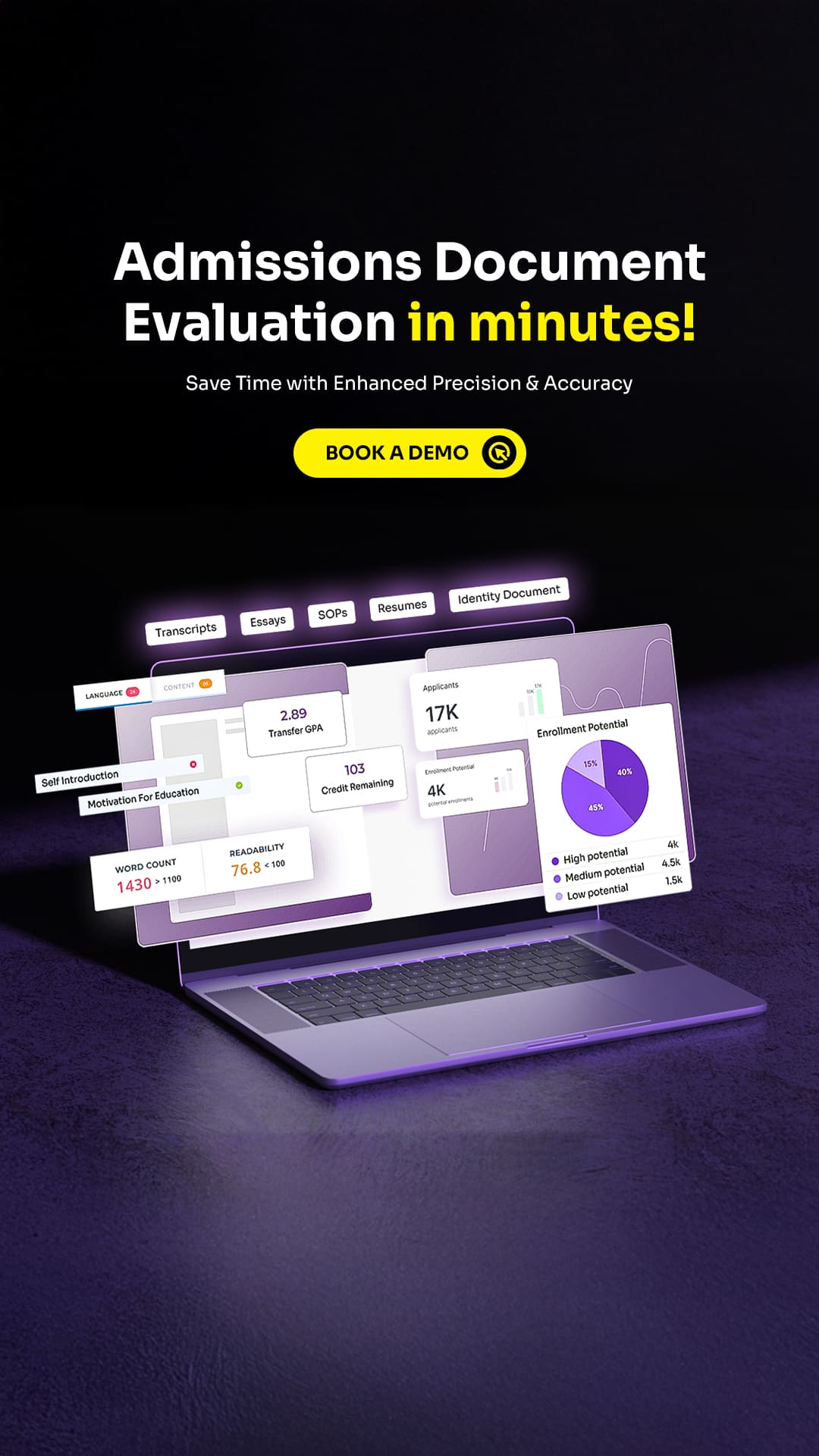
No comments yet. Be the first to comment!
Leave a Comment